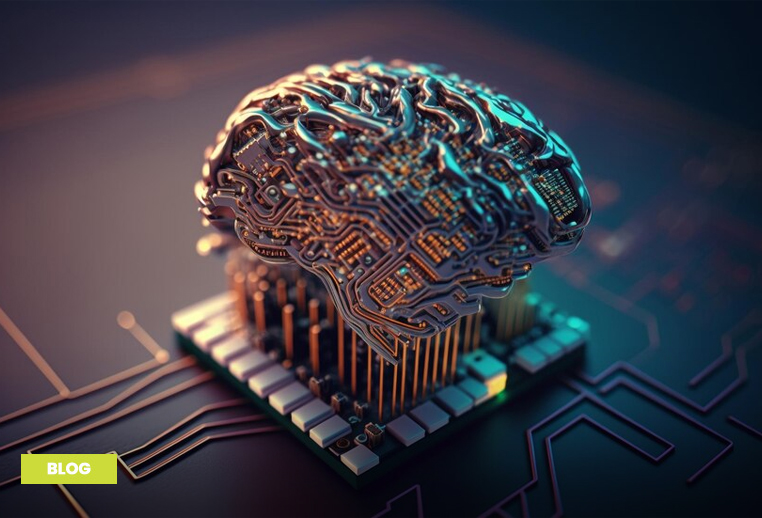What is Deep Learning?
04 October, 2023 Futuristic Technology
You probably feel as though you’re working through a linear checklist when you “work through” a problem. But the human brain doesn’t work that way; it uses a non-linear pattern to process information. Additionally, deep learning, an aspect of artificial intelligence (AI), functions in much the same way.
At its core, deep learning mimics how the human brain works by learning from examples. It mimics how people learn certain kinds of information. Deep learning can perform tasks that people can perform, such as how to drive a car or recognize a dog. This is because it processes information in a similar way.
Deep learning is also used to automate predictive analytics, such as identifying trends and customer purchasing habits. These trends help a business attract and retain more customers. When buying a new screwdriver, do you ever notice those sections on retail websites that list products that are “frequently bought together”? These are based on predictive deep learning algorithms that have suggested additional products. These are the products you might also need based on your past purchasing behavior and your current search activity.

Virtual assistants, fraud detection, language translation, chatbots and service bots, colorization of black-and-white images, facial recognition, and disease diagnosis are just a few examples of other applications.
Speech parsing is a simple example of neural networks. The network uses sounds from unprocessed audio to create words, syllables, and phrases that elicit responses from the listener. The more times the machine is asked the same question, the more accurate it becomes as it learns that this specific sound indicates that it should check the balance on a credit card.
The use of deep learning in industries.
Since the 1940s, neural networks have been in existence. Two computer scientists first developed models of neural networks in 1943. They modeled threshold switches after neurons and demonstrated that even the most basic of these types of networks are capable of computing almost any logical or arithmetic operation.
A computer scientist who was sick of manually computing ballistic trajectories created the first computer prototypes. Deep learning has advanced tremendously since its inception more than 70 years ago, both in terms of sophistication and application. This is largely due to increased computing power (along with significantly lower cost per unit of power), better modeling, and the accessibility of data. Massive amounts of data are needed for deep learning. We currently produce 2.6 quintillion bytes of data per day, according to estimates. In addition, it can analyze large datasets much more quickly than a human. Machines don’t get bored or tired easily.
Is there a downside to deep learning?
Let’s use autonomous vehicles as an example to respond to that query. These self-driving cars were made possible by deep learning, but it seems unlikely that they will completely eliminate traffic accidents. This is similar to a self-driving utopia. A study from the Insurance Institute for Highway Safety (IIHS) claims that autonomous vehicles can prevent about a third of collisions. However, that is more effective than people.
However, other issues with widespread adoption may include moral decisions being left to manufacturers, an increase in accident rates in the early stages of rollout as the technology learns, and challenges in assigning blame for accidents.
Additionally, since deep learning is merely technology there is hacking. In March 2019, two “white hat” hackers only required a short amount of time to enter a Tesla computer. Then run their own code, and have the car obey their commands by using the infotainment system’s browser.
Read More: The role of API Product managers in scaling
How will the industrial economy be affected by deep learning?
Artificial intelligence is becoming more human-like in its interactions with the outside world.
The application of deep learning must also seen from the perspective of the user. If it doesn’t “work”—for instance, if a phone won’t unlock—it might make a customer unhappy or frustrated, which would be counterproductive.
It can be challenging to pinpoint where or why the system malfunctioned due to the complexity of the neural networks used in deep learning, which only serves to exacerbate the problem. Data scientists are attempting to increase visibility and transparency surrounding deep learning models, also known as the “black box” of deep learning.
Deep learning models for important decisions, such as loans, jobs, or parole seekers. Models can also have bias unintentionally built in. Deep learning requires clear boundaries and suitable governance frameworks.
Businesses of the future will be deep learning.
Deep learning has provided us with labor-saving methods to sort fruits and vegetables and image-based product searches like Pinterest.
The latter is a true business case for productivity, whereas the former is more of a consumer convenience.
Deep learning is receiving a lot of funding in the financial services industry. It is used to identify fraud, lower risk, automate trading, and give investors “robo-advice.” A report from the Economist Intelligence Unit (EIU) states that 86% of financial services companies intend to increase their investments in AI by 2025.
AI integration can improve differentiation and competitiveness, boost productivity, affect retention, and even alter the course of disease. This is happening across industries and in all facets of businesses.
It is having an impact on everything, including the redesign of business and operating models, hiring and retention policies, and the development of new corporate cultures that not only embrace but also facilitate the use of deep learning. Even though there are vast amounts of data available to use for transformative decision-making, some estimates indicate that less than 1% of the data held by the majority of organizations is actually used.
